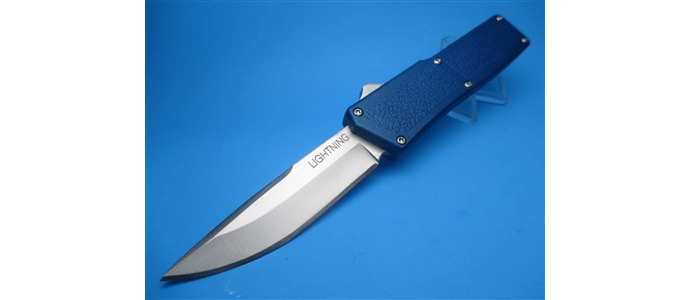When it comes to cutting-edge technology and design, few knives can match the innovation and functionality of OTF (Out-The-Front) knives. These knives are renowned for their unique deployment mechanism, combining impressive speed and precision. In this blog post, we delve into the world of OTF knives, exploring their history, mechanics, practical applications, and the reasons behind their growing popularity among knife enthusiasts.
OTF knives have a fascinating history that dates back to the early 1900s. These knives were initially developed for military purposes, providing soldiers with a reliable and easily accessible cutting tool. Over time, OTF knives evolved, incorporating advancements in engineering, materials, and design to become the sleek and efficient tools we know today.
One of the defining features of OTF knives is their unique deployment mechanism. Unlike traditional folding knives, OTF knives feature a blade that deploys straight forward and retracts back into the handle with a simple push or slide of a button or lever. This automatic mechanism offers lightning-fast deployment, allowing users to access the blade swiftly in critical situations.
OTF knives can be categorized into two main types: single action and double action. Single action OTF knives deploy the blade with the push of a button but require manual retraction. On the other hand, double action OTF knives can both deploy and retract the blade automatically with the push or slide of a button or lever. The choice between single action and double action OTF knives depends on personal preference and specific needs.
OTF knives excel in various practical applications due to their speed, precision, and convenience. These knives are ideal for tasks that require quick and efficient cutting, such as opening boxes, cutting ropes or straps, or engaging in emergency situations. Additionally, OTF knives find utility in specialized fields like emergency services, self-defense, and certain professional trades.
OTF knives come in a wide range of designs, from sleek and minimalist to tactical and rugged. They often feature ergonomic handles for a comfortable grip and robust blade materials such as stainless steel for durability and sharpness retention. Many models incorporate additional features like glass breakers, belt cutters, or pocket clips for enhanced versatility.


